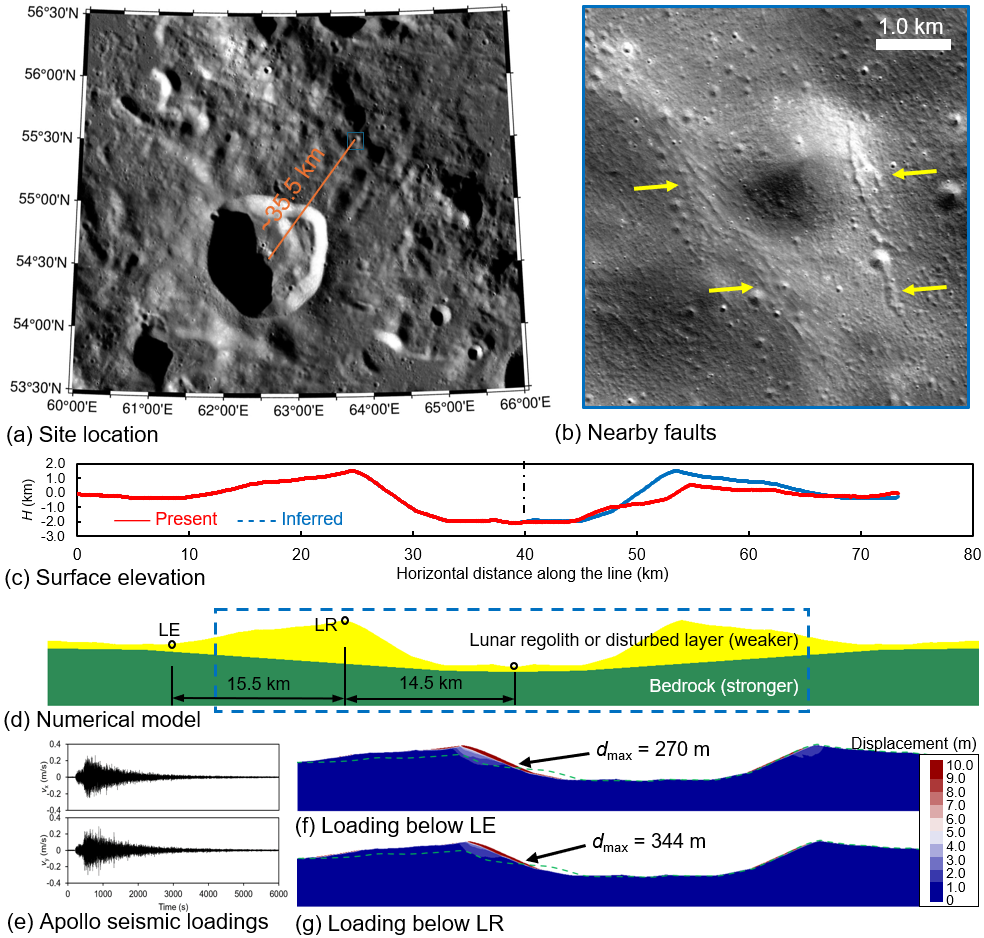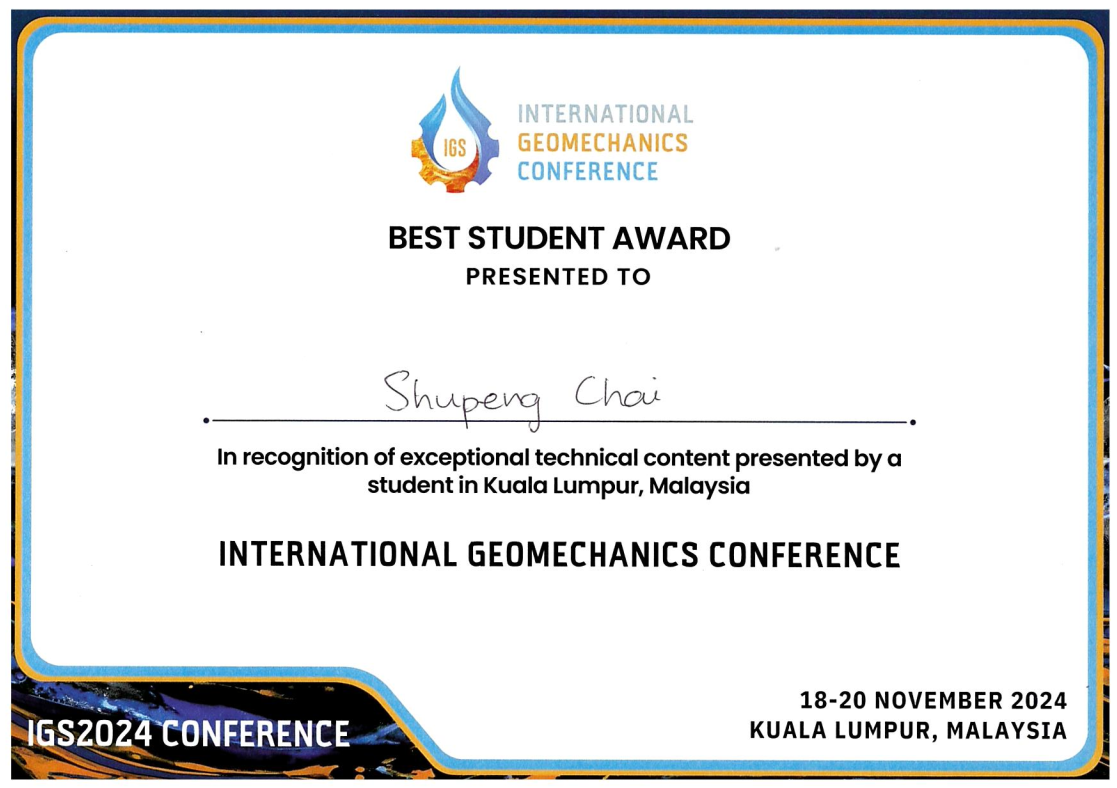Conference: Possible moonquakes and tectonic activities inferred from crater landslides
Published:
Chai S, Zou Y, Chen G, Zhao Q (2024). Possible moonquakes and tectonic activities inferred from crater landslides. AGU24. (Link).

Abstract
Millions of impact craters on the Moon form a large number of slopes. Crater landslides due to slope instability are a typical geological feature on the lunar surface. Shallow moonquakes can be a potential triggering factor for lunar landslides. Reversely, after eliminating other factors of influence, lunar seismicity and tectonic activities can be inferred from lunar crater landslides. Existing analytical methods based on the pseudo-static limit equilibrium method neglect the effects of multi-slope crater geometry and realistic seismic loadings. This study investigated the possibility of moonquake-induced crater landslides by numerical simulations incorporating modified seismic loadings from Apollo lunar seismic ground motions. The wave propagation and crater landslide instability were then analyzed. The lunar geomorphology of nearby faults was taken as complementary evidence for the potential moonquakes. Numerical results with detailed parameter analyses reproduced rotational and translational landslides in either double-side or single-side sliding patterns. The seismic source location can induce directional landslides, with large-displacement landslides on the loading side and small-displacement landslides or stable slopes on the opposite side. Those landslide sliding patterns and surrounding faults contribute to locating the possible moonquakes. A feasible framework is also proposed for landslide and paleoseismicity dating when more lunar samples are returned in the future.


